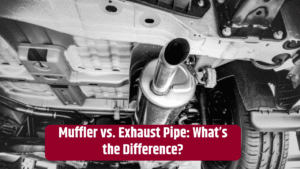When your vehicle fails an emissions test, it’s more than just an inconvenience — it can lead to repair bills, registration issues, and increased pollution. Emissions tests are designed to ensure your car meets environmental standards by limiting the amount of harmful gases it releases into the atmosphere. If your car doesn’t pass, it’s often due to common, preventable problems.
Faulty Oxygen Sensor
The oxygen sensor monitors the amount of unburned oxygen in your vehicle’s exhaust. If it’s faulty, the engine may burn too much or too little fuel, leading to higher emissions. This is one of the most common reasons for emissions test failures.
Symptoms:
- Check engine light is on
- Poor fuel economy
- Rough idling or misfiring
Fix: Replace the sensor. Most models cost between $100–$300 including labor.
Worn-Out Spark Plugs or Ignition System
Old or damaged spark plugs can cause incomplete combustion, releasing more pollutants. Faulty ignition coils or wires can also disrupt proper engine firing.
Symptoms:
- Engine misfires
- Sluggish acceleration
- Increased fuel consumption
Fix: Regular tune-ups and spark plug replacements usually solve this issue.
Dirty or Malfunctioning Air Filter
A clogged air filter reduces airflow to the engine, causing an imbalanced air-fuel mixture. This can increase hydrocarbon emissions, triggering a failed test.
Symptoms:
- Decreased engine performance
- Dirty filter visible during inspection
Fix: Replace the air filter — a low-cost solution that can make a big difference.
Leaking or Damaged Gas Cap
It might seem minor, but a loose or cracked gas cap can cause fuel vapors to escape, leading to elevated emissions.
Symptoms:
- Check engine light
- Fuel smell near the car
Fix: Tighten or replace the gas cap. This fix can cost as little as $10.
Faulty Catalytic Converter
The catalytic converter is key to reducing harmful exhaust emissions. If it’s clogged, inefficient, or damaged, your car will likely fail the test.
Symptoms:
- Rotten egg smell
- Poor acceleration
- Dark exhaust smoke
Fix: This can be expensive — replacements often run $900–$2,500, but necessary for compliance.
Malfunctioning EVAP System
The Evaporative Emission Control (EVAP) system prevents gasoline vapors from escaping into the atmosphere. A problem here can be technical and tricky to diagnose without a scan.
Symptoms:
- Trouble filling the gas tank
- Check engine light
- Diagnostic Trouble Codes (DTCs) related to emissions
Fix: A diagnostic test will pinpoint the issue. Repairs may involve replacing valves, hoses, or the charcoal canister.
Engine Running Too Rich or Too Lean
An incorrect air-fuel ratio can produce excessive carbon monoxide or hydrocarbons. This usually stems from a problem with the fuel injectors, mass airflow sensor, or engine control unit (ECU).
Symptoms:
- Black smoke from exhaust
- Strong fuel smell
- Rough engine performance
Fix: A mechanic will need to perform a diagnostic scan to identify and adjust the air-fuel mix.
Common Emissions Test Failure Causes
| Reason | Estimated Repair Cost | Common Symptoms |
|---|---|---|
| Faulty Oxygen Sensor | $100 – $300 | Check engine light, poor MPG |
| Worn Spark Plugs | $100 – $250 | Misfires, rough idling |
| Dirty Air Filter | $15 – $50 | Reduced performance |
| Loose/Damaged Gas Cap | $10 – $25 | Fuel smell, check engine light |
| Failing Catalytic Converter | $900 – $2,500 | Sulfur smell, sluggish performance |
| EVAP System Issues | $150 – $600+ | Gas tank issues, check engine light |
| Imbalanced Air-Fuel Mixture | $150 – $500+ | Black smoke, poor idle |
Keeping your vehicle in good working condition isn’t just about performance — it’s also about being responsible for the environment. Routine maintenance, check engine light diagnostics, and timely repairs can save you money and headaches down the road. Understanding what causes emissions test failures helps you stay compliant and keep your car running cleaner and more efficiently.
FAQs
How often should I check my car before an emissions test?
A basic inspection a few weeks prior is smart, especially if your check engine light is on or it’s been a while since your last tune-up.
Can I drive my car after it fails an emissions test?
Yes, but you must complete repairs and pass a retest to renew registration in most states.
Will premium gas help me pass an emissions test?
Not necessarily. Fuel quality matters less than proper maintenance and functioning emissions components.
How long do emissions repairs take?
Minor issues can be fixed in an hour, while major ones like a catalytic converter replacement may take a full day.
Does cold weather affect emissions testing?
Yes, especially during cold starts. It’s best to drive for 15-20 minutes before testing to ensure the engine is at optimal temperature.



